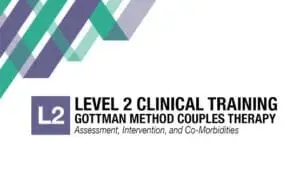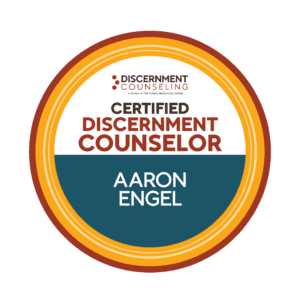What is Trauma?

People have told you to “just” move on from the past, but that is not easy to do. You may have flashbacks about past events that have never been fully processed with a professional. Trauma can be either emotional or physical, and it occurs due to exposure to a life-altering event. A traumatic event can be life-threatening and/or cause chronic adverse mental health issues. Trauma is devastating, yet almost everyone alive has experienced trauma in some form.
“Anything that’s human is mentionable, and anything that is mentionable can be more manageable. When we can talk about our feelings, they become less overwhelming, less upsetting, and less scary. The people we trust with that important talk can help us know that we are not alone.”
Who Experiences Trauma?
The National Center for PTSD encourages therapists to use a “Life Events Checklist” to identify trauma in our patients. It is what it sounds like – a list of 17 different types of traumatic events a person may have experienced, witnessed, or learned about from a loved one. Thus, trauma does not only affect the person directly involved. People who witness traumatic events or loved ones who are told about family members who have experienced traumatic events can also be affected and need mental health care.
Do I Have PTSD?
Experiencing trauma does not necessarily mean that you or a loved one has PTSD. In order to be diagnosed with PTSD, a licensed mental health professional would need to assess to see if you meet specific diagnostic criteria for the disorder. The Diagnostic and Statistical Manual (DSM-5) licensed professionals currently use to diagnose mental health disorders, has several diagnoses related to trauma: Post Traumatic Stress Disorder, Acute Stress Disorder, and Adjustment Disorder (American Psychiatric Association, 2013).
Post-Traumatic Stress Disorder:
PTSD has several defining characteristics which make it different from the others. Briefly and simply, to be diagnosed with this disorder, you must have:
1. Directly experienced, witnessed, and learned about the event happening to someone very close to you,
2. You must have one or more “intrusion symptoms” such as: flashbacks, nightmares, etc.
3. You must have persistent avoidance of stimuli related to the traumatic event, and
4. Negative altered mood and thought associated with the traumatic event.
5. You become affected/reactive when exposed to triggering memories of the traumatic event.
6. The time the disorder bothers you is longer than one month.
7. It causes significant impairment to your social life, work life, and ability to function normally.
8. These issues are not caused by a medical condition, drugs, or alcohol.
(American Psychiatric Association, 2013)
Acute Stress Disorder
Acute stress disorder differs from PTSD in the number of symptoms a person must have to be diagnosed with the disorder and the length of time a person must be affected by the trauma. For this diagnosis, the person is affected three days to 1 month after the trauma exposure (American Psychiatric Association, 2013).
Adjustment Disorder
An adjustment disorder differs from the other two in that emotional or behavioral symptoms are developed as a response to a stressor, such as a loved one and death. In the case of loss, we offer bereavement support and counseling. Symptoms begin within three months of the event taking place but do not last longer than six months after the event is over (American Psychiatric Association, 2013).
Complex PTSD
Complex PTSD, sometimes abbreviated to C-PTSD, is a type of PTSD that is more severe. In addition to the symptoms of PTSD an individual will experience additional symptoms, such as emotional dysregulation, chronic negative self-perception, and relationship difficulties – such as trouble feeling connected to others, difficulties trusting others, feeling guilt, numbness, etc. Complex PTSD generally is developed due to ongoing and repeated trauma. Such trauma usually occurs in childhood, during abusive relationships, sex trafficking, war, and other such events.
How Do You Treat Trauma?
Trauma is treated using Cognitive Behavioral Therapy (CBT), Dialectical Behavioral Therapy (DBT), and Judith Herman’s Trauma Theory.
Cognitive Behavioral Therapy
Cognitive behavioral therapy is a special type of therapy where we work on changing negative thoughts and beliefs. In the context of trauma, one of the consequences of trauma tends to be negative core beliefs – such as: I am not good enough, I’m worthless, I should have done something. In therapy, we work on addressing those negative core beliefs- centered around self-worth, guilt, and fear – and work on changing them. I am good enough, I am worthy, and I did what I could.
Dialectical Behavioral Therapy
Dialectical behavioral therapy is a special type of therapy where we work on changing negative and harmful behaviors and adjust them. We practice replacing unhealthy behaviors with healthy behaviors and routines. One of the biggest problems that trauma creates is a belief in us that we are “unsafe.” In therapy, we work to understand what is really “safe” and what our brain tells us is unsafe as a protective measure to keep us from being hurt.
Judith Herman’s Trauma Theory
Judith Herman was a famous psychiatrist in the 1980s who studied trauma. She came up with a theory on how to treat people who struggled with trauma. In this theory, there are three stages:
Stage 1: Establishment of Safety
In this stage, the therapist and patient work toward making the patient feel safe and heard. Typically in this stage, trauma patients feel very stuck. They are so stuck in the past, their trauma – that they cannot imagine any kind of a future. We discuss that the traumatic event is over and work on building trust and establishing safety. We work on the CBT and DBT techniques to help the patient learn how to cope with symptoms of trauma and lessen their severity. The patient learns how to use these techniques to manage their symptoms, reduce fear, and increase their self-worth and trust.
Stage 2: Remembrance and Mourning
The second stage allows you to tell your story to the therapist. The patient is able to tell their story and take some “power back.” Equipped with their new skills, the patient is able to cope with the volatile feelings that come with sharing trauma with a new person. In this stage, the patient has built distress tolerance – the ability to sit with negative and uncomfortable feelings and are empowered. This is the stage where we focus our energy on healing from our past, and we can start to imagine a future where we can move forward.
Stage 3: Reconnection
In this stage, the patient finally begins to feel hopeful again. They have mourned their old self and healed from their trauma and must develop a new self to move forward. In this stage, it is important for the patient to spend time on self-care. You need to spend time and energy getting to know your new self and nourishing them. When in this stage you are able to create goals and feel empowered. You have done great, beautiful things and are developing a new identity.
Is Trauma Therapy Difficult?
Trauma is heavy, and it is overwhelming, but therapy can help. Some are concerned that the process will be too heavy, but holding things in usually worsens them. Many people report great relief in processing unresolved issues. In some ways, it’s like getting a cortisoTrauma is heavy, and it is overwhelming, but therapy can help. Some are concerned that the process will be too heavy, but holding things in usually worsens them. Many people report great relief in processing unresolved issues. In some ways, it’s like getting a cortisone shot. No one really “wants” a painful shot, but the longer-term pain relief is worth it for those who need it. Please feel free to reach out to our office and see if we might be a good fit for your needs.

Common questions
Please see above. The short answer is yes, but it’s well worth it.
We get this question a lot. Unfortunately, there is no easy answer. While I do not like to say “it depends”, it depends. It’s not usually a quick fix, but like working with a personal trainer or physical therapist, you get out of it what you put into it.
Probably just about anyone can benefit. Trauma doesn’t have to be a life-threatening incident (but can be). At the same time, no matter how well your parents tried and even if you had a great upbringing, there is often some unresolved childhood trauma people aren’t even aware of.
Not exactly. Please see our page about grief to learn about the differences.
References
American Psychiatric Association. (2013). Diagnostic and statistical manual of mental disorders (5th ed.). https://doi.org/10.1176/appi.books.9780890425596






